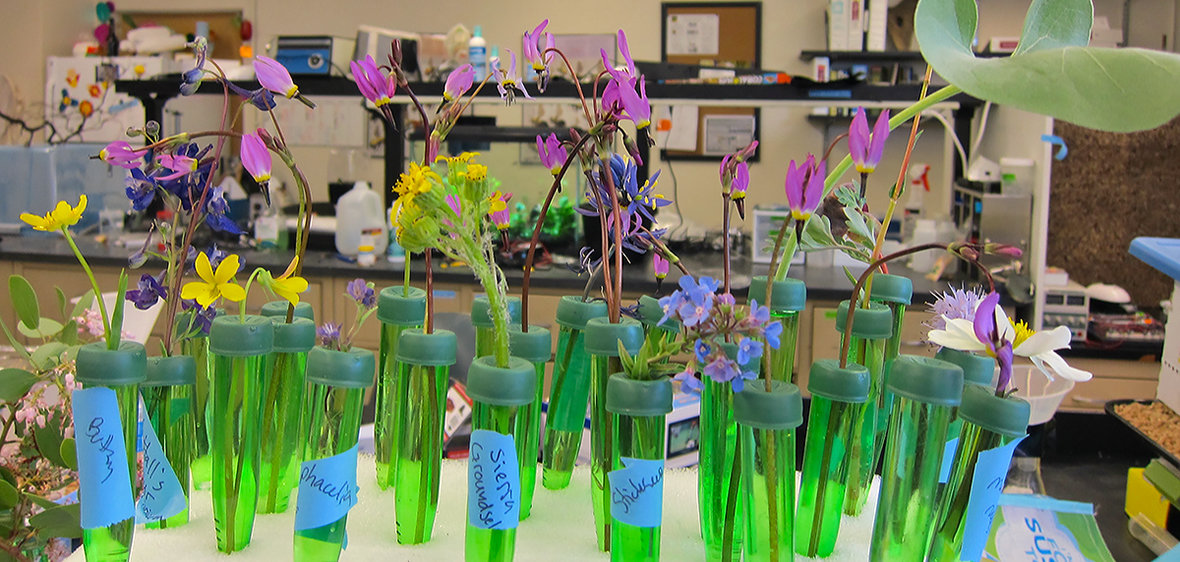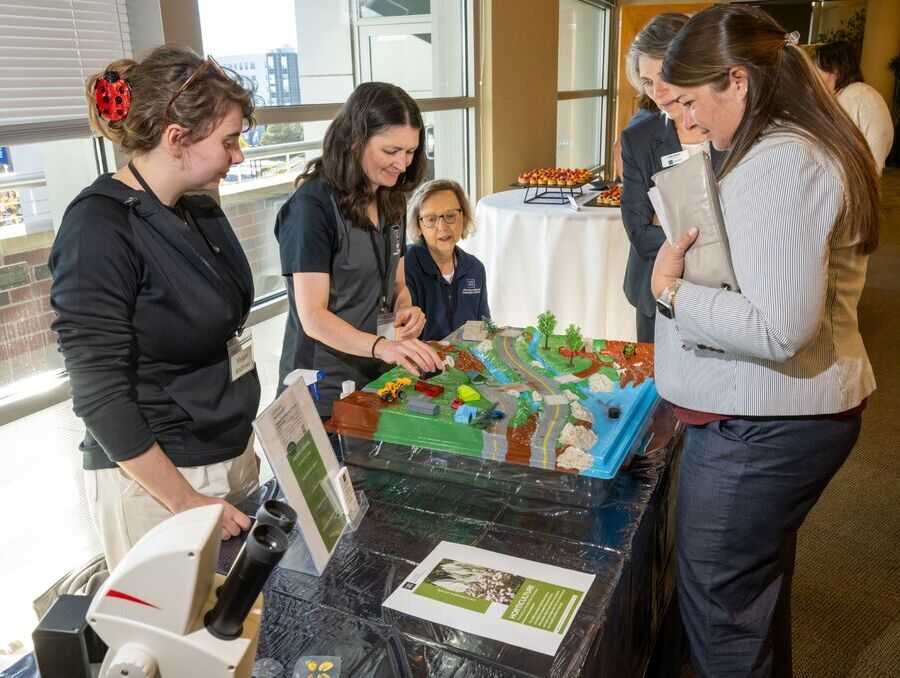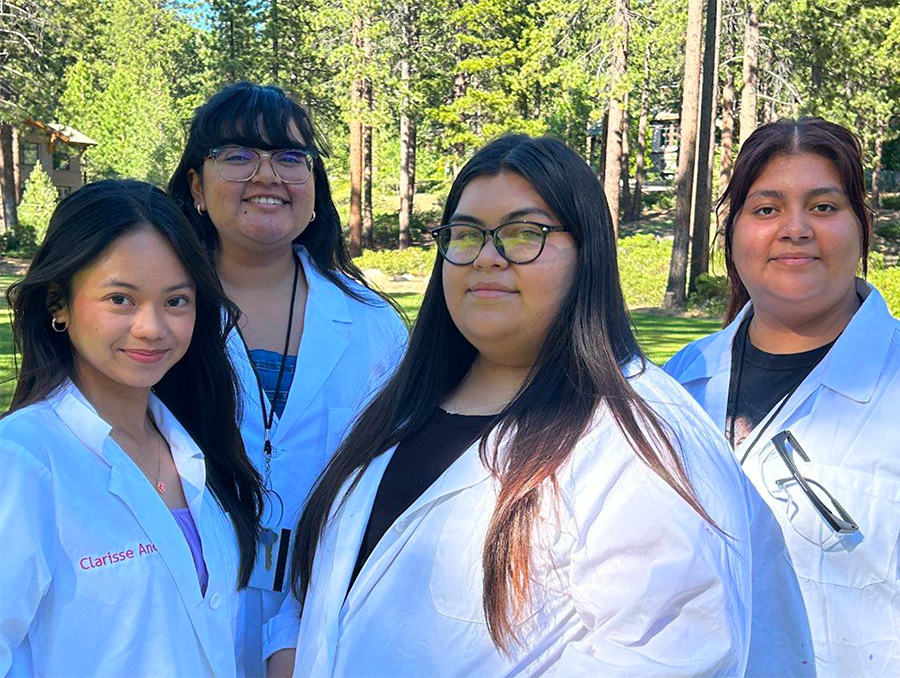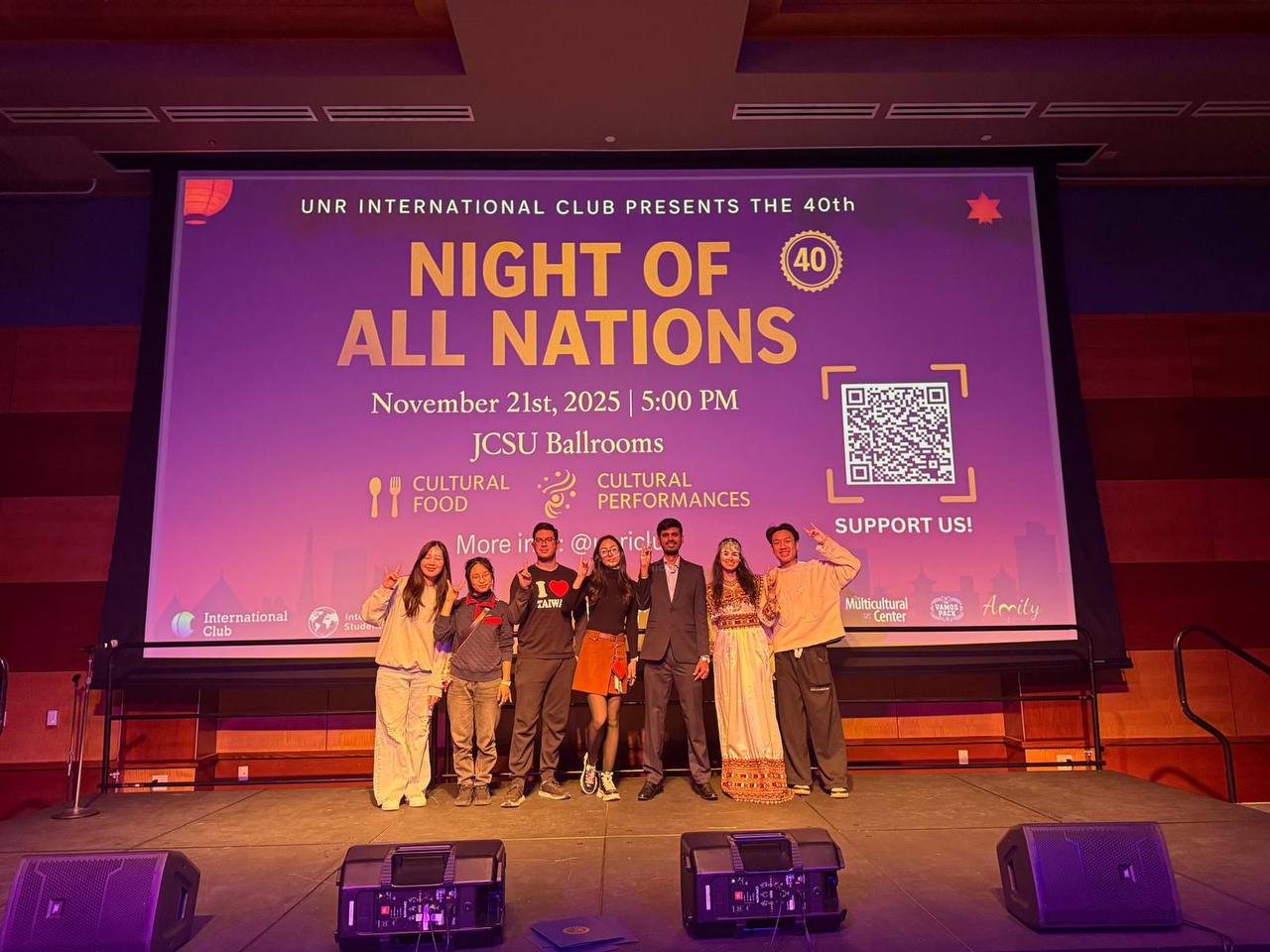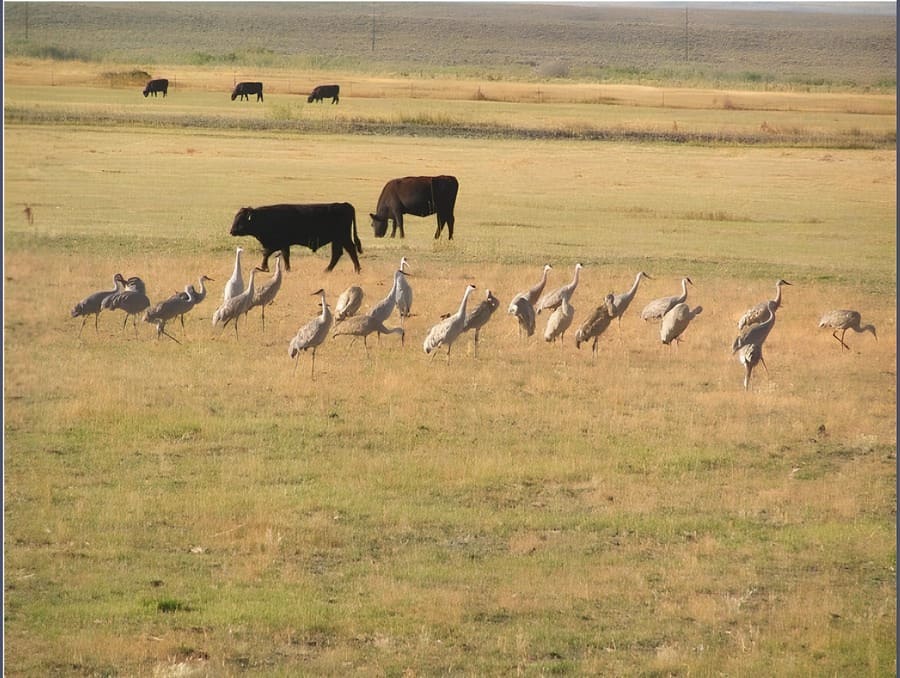Biologist Anne Leonard is studying how bumblebees pick the wildflowers they use for food, and how that might affect the plant community around them.
Leonard, a Department of Biology associate professor at the University of Nevada, Reno, has a $579,000 grant from the National Science Foundation to fund three years of her research on bumblebees and their reaction with Nevada state wildflowers.
Bees contribute at least $15 billion annually to pollination of agricultural crops, and their visits to wildflowers provide the foundation for many native plant communities. Despite their economic and ecological importance, surprisingly little is known about how bees evaluate the composition of the nectar (their source of carbohydrates) and pollen (their source of protein and fat) they collect from flowers.
The research studies how the composition of the rewards (nectar and pollen) that plants offer pollinators will influence their interactions with those bees as well as how the plants interaction influences its neighbor plants.
Many bee species in the United States are in decline, driven in part by changes to the nutritional resources available to them. Predicting how bees will respond to the introduction of novel foods offered by invasive, ornamental, or agricultural plants requires understanding how nutritional need guides their foraging decisions. The information this project will uncover can thus help inform efforts to conserve bee populations, whose own food security is directly linked to that of Americans.
The nutritional value varies across plants, so bees often combine visits to several species of plants to achieve a balanced diet. This project asks how the composition of a given plant's resources affects a bee's tendency to visit it.
"Think of it like a floral supermarket... or one stop shopping," Leonard said. "If you're a plant that has decided to invest in just offering pollen to bees, do you do better if you're surrounded by neighboring plants that offer nectar, or do you do better to offer both rewards?"
Leonard and her team of researchers are working on lab-based behavioral experiments as well as methods using advanced drone technology.
"I'm beyond thrilled to continue studying interactions between bumblebees and Nevada's wildflowers," she said. "All the support here at the University for developing new techniques that can advance our understanding of pollination biology in major ways, such as drone based methods of mapping wildflower communities and the chemical ecology center, I'm sure played a role in its success. The University Pollinator Garden is also going to be a fantastic way to make our research discoveries visible and meaningful to the public."
In the lab, the team uses artificial flowers that have different ratios of nectar and pollen to see how that controls bees' interactions in a very artificial setting.
In the field, Leonard's doctoral student, Jacob Francis, flies a drone over a meadow to extract the identity of plant species and maps out the special distribution of the different plant species in that area. The team explained how this is an ideal method as opposed to counting and mapping plant species themselves for hours under the hot sun.
"This technology helps determine this information without needing a group of hard working field assistants," Leonard said.
Also part of the project, an exhibit at the University's Natural History Museum and Pollinator Garden will educate school groups about the importance of nutrition for pollinators and help visitors decide which backyard plants provide the best food for bees. Research experiences for undergraduates and science teachers-in-training will help train the next generation of bee scientists and disseminate findings widely.
"I hope this will get the public thinking about what they should have in their garden in order to help feed the bees and, ultimately, save the bees," Leonard said.
